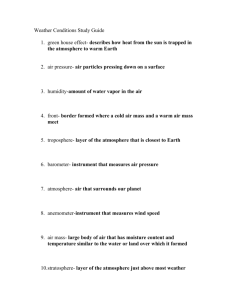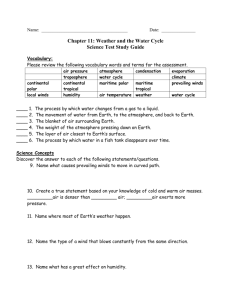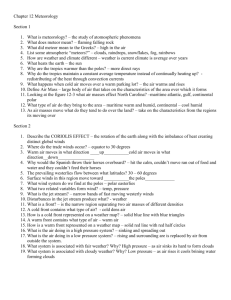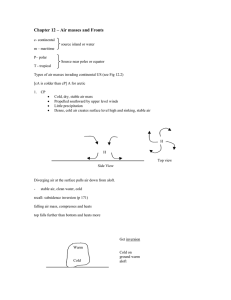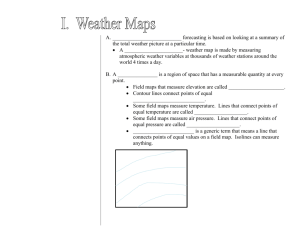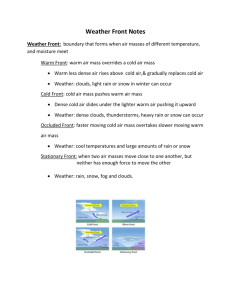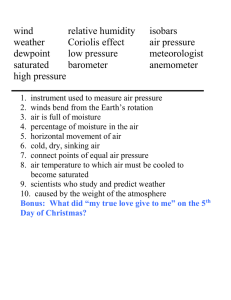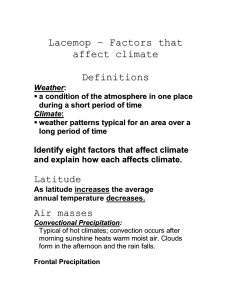Wind and Air Masses
advertisement
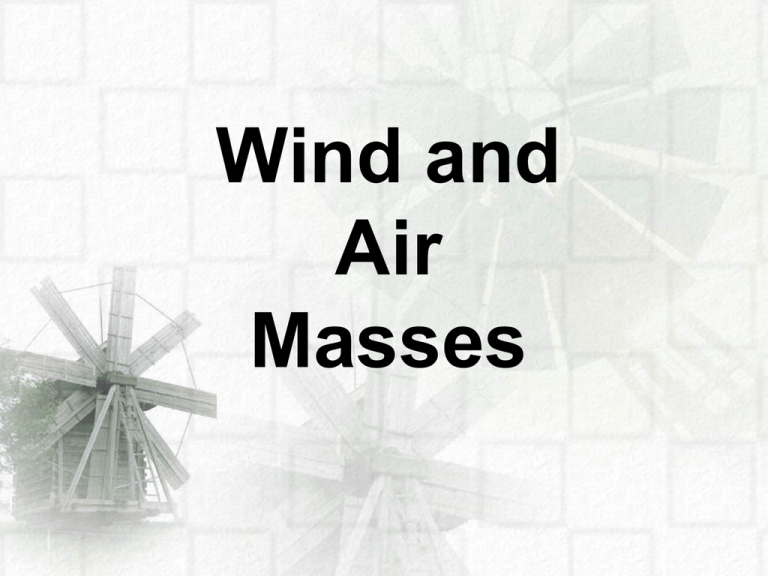
Wind and Air Masses • An air mass is a volume of air that takes on the conditions of the area where it is formed. • An air mass originating over an ocean would contain a considerable amount of moisture. When this moist air mass passes over land some form of precipitation would most likely be released. • In contrast, an air mass originating over land would probably be dry as it lacks a ready source of moisture. •-Air masses also take on the temperature characteristics from areas where they form. An air mass that forms over the Gulf of Mexico would be warm and moist. An air mass forming over a polar region would be cold and dry. •-A front is the leading edge of an air mass. A cold front leads a cold air mass, while a warm front leads a warm air mass. •-Air moves along the surface of Earth from high-pressure areas toward low-pressure areas. This moving air produces wind. • A high pressure system would produce sunny, dryer but cooler conditions. In the winter, a high pressure system produces sunny but very cold days. In the summer, the days are sunny and not humid. • A low pressure system produced cloudy wetter but warmer days. In the summer, a low pressure system would produce a warm rainy day. In the winter, the day would have snow, and if the low pressure system was intense, could produce a snow storm. • Over most of Canada, winds blow from west to east called the westerlies. These prevailing winds move air masses that affect our weather.
